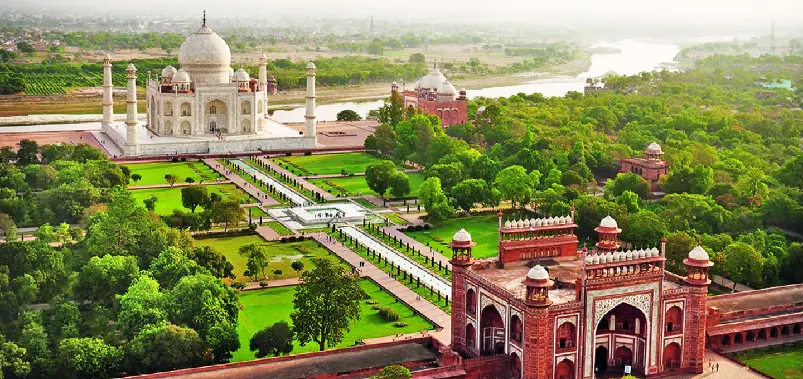
World Heritage Sites in India are recognized and safeguarded globally by the UNESCO World Heritage Convention, which was founded in 1972. There are now 42 UNESCO World Heritage Sites In India by virtue of the addition of two more sites by India. India now ranks sixth in the world for the number of UNESCO World Heritage Sites. There are 43 Indian sites: 1 is mixed (both natural and cultural), 7 are natural, and 35 are cultural.
Put another way, 43 locations in India have been designated by UNESCO as having exceptional universal importance and deserving of preservation for future generations. Ancient temples, castles, forts, caves, national parks, and wildlife sanctuaries are some of these locations.
These locations showcase India's abundant natural and cultural legacy, making them essential stops for any traveller to the nation.
A location that has been approved by the United Nations Educational, Scientific, and Cultural Organization (UNESCO) is known as a World Heritage Site. A good example of this is the 1972 UNESCO-accepted Convention for the Protection of the World Cultural and Natural Heritage.
Emperor Shah Jahan constructed the Taj Mahal, a white marble work of Mughal architecture and one of the Seven Wonders of the World, as a memorial to his wife, Mumtaj Mahal. It is situated in Agra on the Yamuna River's bank. It was finished in 1653 at an estimated cost of 32 million Indian rupees, or 58 billion rupees in today's currency. It is referred to as the "Jewel of Muslim Art in India" and is regarded as the best example of Mughal architecture in existence. Probably the most well-known monument in the world due to its connection to Indian historical sites and top place to visit in India.
The well-known Indian UNESCO World Heritage site Khajuraho is situated in the state of Madhya Pradesh. Situated 175 miles southeast of Jhansi, Khajuraho is a singular cultural site that is well-known for a collection of Hindu and Jain temples. They are renowned for their sensual sculptures and figures and for the symbolism of the Nagara style. These sensual stone carvings depicting human and animal forms in sensual situations are beautifully rendered and serve as a testament to India's rich cultural legacy. The Chandella dynasty, which ruled from 950 to 1050 CE, is credited with creating the majority of these monuments. It is composed of eighty-five Temples dispersed over twenty square kilometers.
The Sun Temple at Konark is an Odisha temple dating back to the 13th century that is located not far from the well-known seaside town of Puri. Around the year 1250 AD, King Narasimhadeva I of the Eastern Ganga Dynasty constructed it. Six colossal carved horses lead the Sun Temple, which resembles a massive chariot with carved stone walls, pillars, and a wheel. It's regarded as one of India's biggest brahmin sanctuaries as well. The temple was allegedly once constructed at the mouth of the Chandrabhaga River, but since then, the waterline has retreated. The grandeur of the then-dominant Kalinga architectural style is reflected in this World Heritage Site in India.
The Red Fort was constructed by Emperor Shah Jahan when he moved his capital from Agra to Delhi, or what was then known as Shahjahanabad, and is located in the heart of the historic city of New Delhi. The fort developed as the Mughals' political centre. The Red Fort is the ideal illustration of how Mughal art and architecture achieved their pinnacle under Shah Jahan. Several aspects of the Red Fort exhibit the fusion of Timurid, Hindu, Indo-Islamic, and Persian architectural styles. It is constructed of red sandstone and is home to a number of lesser structures, including the Diwan-i-aam, the Diwan-i-Khas, and the private pavilions.
One of India's last unspoiled natural places, Kaziranga Wildlife Sanctuary is situated in Assam and is well-known for its one-horn rhinoceroses. According to legend, Lord Curzon started the endeavour to create this World Heritage Site in India when his wife, unable to spot a single rhinoceros in the area, begged her husband to do action to safeguard these threatened animals. This park is mostly made up of thick grasslands and woods, with a number of streams and lakes passing through it. It is located on the flood plains of the Brahmaputra river. The rhino is the most endangered of the approximately fifteen endangered Indian faunal species found in Kaziranga.
Rajasthani astronomical observatory Jantar Mantar was constructed in the eighteenth century. Sawai Jai Singh, the Rajput King of Rajasthan, established this astronomical observatory in 1738 CE. It is a set of 19 astronomy instruments, which includes the biggest stone sundial in the world. These instruments are entirely human-made. The observatory is made up of instruments that were used to compute equatorial, ecliptic, horizon-zenith local networks, and celestial coordinate systems. This structure, one of India's best-preserved observatories, is a superb illustration of both the country's scientific and cultural legacy.
The city's name, Fatehpur Sikri, commemorates Akhbar's victory (Fateh) over Ranthambore and Chittor. The monument complex consists of four primary sites. The most important entryway in Asia, the Buland Darwaza, or Jama Masjid, is constructed from a particular type of wood that was brought from Australia and sinks in water. Panch Mahal, also known as Jada Baai ka Mahal, is regarded as the Navaratnas' (Birbal, Tansen, etc.) place of origin. The Diwan-e-Khas and Diwan-e-aam were also inside. Inside the Buland Darwaza is Salim Chishti's Tomb. Notable Indian historical landmarks include all of these Mughal structures
Fill out this form with all the required information. Within 12 hours, we will provide you with a tailor-made itinerary at the best price.
Experience authentic travel, request a custom quote today and get one step closer to your personalized trip.
Speak to our India Destination Experts at Call +91-8955000999